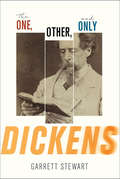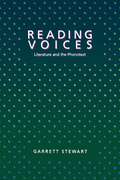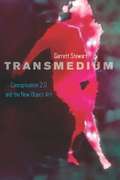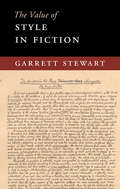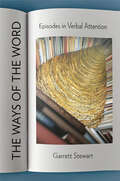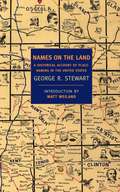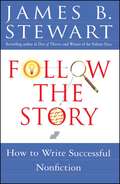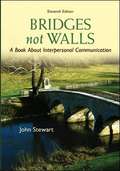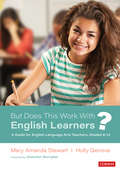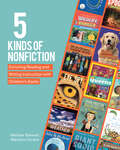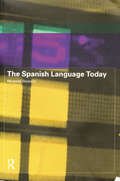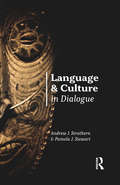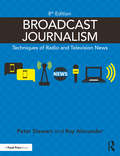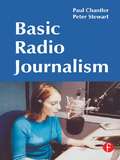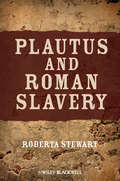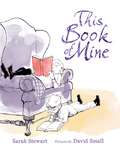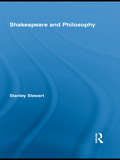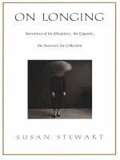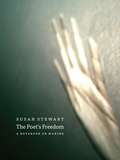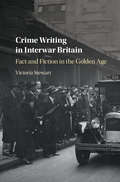- Table View
- List View
The One, Other, and Only Dickens
by Garrett StewartIn The One, Other, and Only Dickens, Garrett Stewart casts new light on those delirious wrinkles of wording that are one of the chief pleasures of Dickens’s novels but that go regularly unnoticed in Dickensian criticism: the linguistic infrastructure of his textured prose. Stewart, in effect, looks over the reader’s shoulder in shared fascination with the local surprises of Dickensian phrasing and the restless undertext of his storytelling. For Stewart, this phrasal undercurrent attests both to Dickens’s early immersion in Shakespearean sonority and, at the same time, to the effect of Victorian stenography, with the repressed phonetics of its elided vowels, on the young author’s verbal habits long after his stint as a shorthand Parliamentary reporter.To demonstrate the interplay and tension between narrative and literary style, Stewart draws out two personas within Dickens: the Inimitable Boz, master of plot, social panorama, and set-piece rhetorical cadences, and a verbal alter ego identified as the Other, whose volatile and intensively linguistic, even sub-lexical presence is felt throughout Dickens’s fiction. Across examples by turns comic, lyric, satiric, and melodramatic from the whole span of Dickens’s fiction, the famously recognizable style is heard ghosted in a kind of running counterpoint ranging from obstreperous puns to the most elusive of internal echoes: effects not strictly channeled into the service of overall narrative drive, but instead generating verbal microplots all their own. One result is a new, ear-opening sense of what it means to take seriously Graham Greene’s famous passing mention of Dickens’s "secret prose."
Reading Voices: Literature and the Phonotext
by Garrett Stewart"At last, a scrupulous and sustained--'earsighted'--study of that shadowy yet vital intersection of sound and sense without which literary reading remains a disembodied exercise. . . . Stewart immerses us brilliantly in the poststructural method of a 'phonemic' analysis."--Geoffrey H. Hartman, author of Saving the Text "Stunningly articulate. . . . Alongside brilliant exegeses of passsages from the major English poets, Stewart offers new and dazzling interpretations of the 'poetics of prose' in such novelists as Dickens, Lawrence, Joyce, and Woolf. The book is a tour de force, no doubt about it. In my opinion, Reading Voices will have not only a wide but a lasting reception."--Hayden White, author of Metahistory "This is exciting, virtuoso work in a playfully imaginative hermeneutic mode. Stewart's ear hears fascinating and compelling things, things which have a delightfully rich and thematically complex bearing on much larger textual issues."--Paul Fry, author of The Reach of Criticism "A truly original book. . . . The first work in years to bring together linguistically informed criticism with more philosophically oriented literary theory. The resulting vision of literature is odd, personal, passionate, even outlandish. Not only is Stewart himself and extraordinary stylist, but his work suggests a breakthrough in stylistic criticism so radical as to revitalize the entire field."--Jay Clayton, author of Romantic Vision and the Novel
Transmedium: Conceptualism 2.0 and the New Object Art
by Garrett StewartIf you attend a contemporary art exhibition today, you’re unlikely to see much traditional painting or sculpture. Indeed, artists today are preoccupied with what happens when you leave behind assumptions about particular media—such as painting, or woodcuts—and instead focus on collisions between them, and the new forms and ideas that those collisions generate. Garrett Stewart in Transmedium dubs this new approach Conceptualism 2.0, an allusion in part to the computer images that are so often addressed by these works. A successor to 1960s Conceptualism, which posited that a material medium was unnecessary to the making of art, Conceptualism 2.0 features artworks that are transmedial, that place the aesthetic experience itself deliberately at the boundary between often incommensurable media. The result, Stewart shows, is art whose forced convergences break open new possibilities that are wholly surprising, intellectually enlightening, and often uncanny.
The Value of Style in Fiction (The Value of)
by Garrett StewartThis is the first book to demonstrate the value of prose analysis - both appreciative and interpretive in its 'evaluations' - across dozens of authors, including Jane Austen, Virginia Woolf, Don DeLillo, and Toni Morrison. The Value of Style in Fiction is designed not just for students and scholars of the English novel - and its verbal 'microplots' - but also for anyone interested in mastering the art of the sentence by 'writing along with' its finest examplars in a fully descriptive account: a stylistic challenge in its own right exemplified by Stewart's multifaceted critical modelling. Beginning with a state-of-the-field survey of prose poetics, this manual of invested reading concludes with an 'Inventory' of terms (bolded throughout) drawn primarily from grammar, rhetoric, etymology, and phonetics, but also narratology and poetic theory: a glossary whose consultation can help cross-map certain verbal tendencies in literary-historical evolution and its separate landmark writers.
The Ways of the Word: Episodes in Verbal Attention
by Garrett StewartIn The Ways of the Word, Garrett Stewart steps aside from theory to focus on the sheer pleasure of attentive reading and the excitement of recognizing the play of syllables and words upon which the best literary writing is founded. Emerging out of teaching creative writing and a broader effort to convene writers and critics, Stewart's "episodes in verbal attention" track the means to meaning through the byways of literary wording.Through close engagement with literary passages and poetic instances whose imaginative demands are their own reward, Stewart gathers exhibits from dozens of authors: from Dickinson, Dickens, and DeLillo to Whitman, Woolf, and Colson Whitehead. In the process, idiom, tense, etymology, and other elements of expressive language and its phonetic wordplay are estranged and heard anew. The Ways of the Word fluidly and intuitively reveals a verbal alchemy that is as riveting as it is elusive and mysterious.
Names on the Land: A Historical Account of Place-Naming in the United States
by George R. StewartGeorge R. Stewart's classic study of place-naming in the United States was written during World War II as a tribute to the varied heritage of the nation's peoples. More than half a century later, Names on the Land remains the authoritative source on its subject, while Stewart's intimate knowledge of America and love of anecdote make his book a unique and delightful window on American history and social life. Names on the Land is a fascinating and fantastically detailed panorama of language in action. Stewart opens with the first European names in what would later be the United States-- Ponce de León's flowery Florída, Cortés's semi-mythical isle of California, and the red Rio Colorado-- before going on to explore New England, New Amsterdam, and New Sweden, the French and the Russian legacies, and the unlikely contributions of everybody from border ruffians to Boston Brahmins. These lively pages examine where and why Indian names were likely to be retained; nineteenth-century fads that gave rise to dozens of Troys and Athens and to suburban Parksides, Brookmonts, and Woodcrest Manors; and deep and enduring mysteries such as why "Arkansas" is Arkansaw, except of course when it isn't. Names on the Land will engage anyone who has ever wondered at the curious names scattered across the American map. Stewart's answer is always a story-- one of the countless stories that lie behind the rich and strange diversity of the USA.
Follow the Story: How to Write Successful Nonfiction
by James B. StewartAn indispensable guide to nonfiction writing from the Columbia Journalism School professor and Pulitzer Prize–winning journalist behind the bestsellers Blind Eye, Blood Sport, and Den of Thieves.In Follow the Story, bestselling author and journalist James B. Stewart teaches you the techniques of compelling narrative writing, from nonfiction books to articles, feature stories, or memoirs. Stewart provides concrete directions for conceiving, reporting, structuring, and writing nonfiction—techniques that he has used in his own successful books and stories. By using examples from his own work, Stewart illustrates systematically a way of thinking about and executing stories, a method that has helped numerous reporters and Columbia students become better writers.Follow the Story examines in detail: - How an idea is conceived - How to &“sell&” ideas to editors and publishers - How to report the nonfiction story - Six models that can be used for any nonfiction story - How to structure the narrative story - How to write introductions, endings, dialogue, and description - How to introduce and develop characters - How to use literary devices - Pitfalls to avoid Learn a clear way of looking at the world with the alert curiosity that is the first indispensable step toward good writing.
Bridges Not Walls: A Book About Interpersonal Communication
by John StewartSince the first edition in 1973, Bridges Not Walls has examined the power and promise of interpersonal communication in intimate relationships, families, communities, and cultures. The text presents a broad range of scholarly and popular articles drawn from several disciplines, including communication, psychology, and philosophy, all chosen for their understandability and practical applicability. Within these readings are thought-provoking discussions of interpersonal contact, identity-management, verbal and nonverbal cues, perception, listening, assertiveness and self-disclosure, family communication, intimacy and social support, defensiveness and hurtful communication, conflict management, culture, and dialogue. Together, the readings emphasize the social and relational elements of human communication, the overlapping influence of verbal and nonverbal cues, the prominence of culture, and the close connection between quality of communication and quality of life.
But Does This Work With English Learners?: A Guide for English Language Arts Teachers, Grades 6-12
by Mary Amanda Stewart Holly Ann GenovaSecondary ELA teachers, be excited: here at last is that crash course in utilizing the best of what we already know about teaching reading, writing, and language to ensure our English learners thrive. Take Penny Kittle and Donalyn Miller&’s reader&’s workshops. Take Kylene Beers and Robert Probst&’s &“signposts.&” Take the best writing techniques advanced by the National Writing Project. Take Jim Burke&’s essential questions for life. Award-winning EL authorities Mandy Stewart and Holly Genova describe immediate adaptations you can put in place to simultaneously build your ELs&’ language and literacy, while affirming their languages, cultures, and unique lived experiences. A rare blend of the humane and practical, But Does This Work with English Learners? is a book on how to leverage our ELs&’ full linguistic repertoires in the ELA classroom, while remaining sensitive to those barriers that could restrict learning. With this book as your guide, you&’ll learn how to: Look beyond the labels, and better understand the diversity of ELs, English language proficiency levels, and sociopolitical influences Teach and assess through reader&’s workshop, recognizing where comprehensible input fits in and adapting recurring features like support, choice, conferencing, and academic conversations Teach and assess through writer&’s workshops, including modifications to quick-writes, minilessons, conferencing, sharing, and more Teach through structures and community with classroom schedules and behavior norms, and activities like All About Me Paragraphs and Six Things You Need to Know About Me Listicles Embrace identity in inquiry cycles via research and family interviews, mentor texts and essays, pictorial autobiographies, memory paragraphs, and more Answer your own FAQs such as How do I teach students if I don&’t know their language? What about grammar? How do I teach the grade-level ELA standards while I teach the language? &“As you read this book,&” Mandy and Holly write, &“our hope is that you will begin to see your students as multilinguals—people who already have language as well as a wealth of knowledge and are just adding English to that great repertoire.&” If you have even a single English learner in your classroom, we urge you to read this book and institute its practices. Right away! &“Mandy Stewart and Holly Genova have given us a primer for the evolving complexities of our classroom melting pots, a map for navigating the murky waters of regulations, and most importantly, a recipe for opening our arms to children from all over the world. They welcome them with thoughts like &‘A foreign accent is a sign of bravery.&’&” --GRETCHEN BERNABEI, Coauthor of Fun-Sized Academic Writing for Serious Learning &“After reading this book, I was left with the feeling that I learned something new on every page--something that I had previously either wondered about or struggled to understand. Mandy Stewart and Holly Genova are the guides we all need to help us understand and better address the needs of our English learners.&” --JIM BURKE, Author of The English Teacher&’s Companion
But Does This Work With English Learners?: A Guide for English Language Arts Teachers, Grades 6-12
by Mary Amanda Stewart Holly Ann GenovaSecondary ELA teachers, be excited: here at last is that crash course in utilizing the best of what we already know about teaching reading, writing, and language to ensure our English learners thrive. Take Penny Kittle and Donalyn Miller&’s reader&’s workshops. Take Kylene Beers and Robert Probst&’s &“signposts.&” Take the best writing techniques advanced by the National Writing Project. Take Jim Burke&’s essential questions for life. Award-winning EL authorities Mandy Stewart and Holly Genova describe immediate adaptations you can put in place to simultaneously build your ELs&’ language and literacy, while affirming their languages, cultures, and unique lived experiences. A rare blend of the humane and practical, But Does This Work with English Learners? is a book on how to leverage our ELs&’ full linguistic repertoires in the ELA classroom, while remaining sensitive to those barriers that could restrict learning. With this book as your guide, you&’ll learn how to: Look beyond the labels, and better understand the diversity of ELs, English language proficiency levels, and sociopolitical influences Teach and assess through reader&’s workshop, recognizing where comprehensible input fits in and adapting recurring features like support, choice, conferencing, and academic conversations Teach and assess through writer&’s workshops, including modifications to quick-writes, minilessons, conferencing, sharing, and more Teach through structures and community with classroom schedules and behavior norms, and activities like All About Me Paragraphs and Six Things You Need to Know About Me Listicles Embrace identity in inquiry cycles via research and family interviews, mentor texts and essays, pictorial autobiographies, memory paragraphs, and more Answer your own FAQs such as How do I teach students if I don&’t know their language? What about grammar? How do I teach the grade-level ELA standards while I teach the language? &“As you read this book,&” Mandy and Holly write, &“our hope is that you will begin to see your students as multilinguals—people who already have language as well as a wealth of knowledge and are just adding English to that great repertoire.&” If you have even a single English learner in your classroom, we urge you to read this book and institute its practices. Right away! &“Mandy Stewart and Holly Genova have given us a primer for the evolving complexities of our classroom melting pots, a map for navigating the murky waters of regulations, and most importantly, a recipe for opening our arms to children from all over the world. They welcome them with thoughts like &‘A foreign accent is a sign of bravery.&’&” --GRETCHEN BERNABEI, Coauthor of Fun-Sized Academic Writing for Serious Learning &“After reading this book, I was left with the feeling that I learned something new on every page--something that I had previously either wondered about or struggled to understand. Mandy Stewart and Holly Genova are the guides we all need to help us understand and better address the needs of our English learners.&” --JIM BURKE, Author of The English Teacher&’s Companion
5 Kinds of Nonfiction: Enriching Reading and Writing Instruction with Children's Books
by Melissa Stewart Marlene CorreiaOnce upon a time...children's nonfiction books were stodgy, concise, and not very kid friendly. Most were text heavy, with just a few scattered images decorating the content and meaning, rather than enhancing it. Over the last 20 years, children's nonfiction has evolved into a new breed of visually dynamic and engaging texts.In 5 Kinds of Nonfiction: Enriching Reading and Writing Instruction with Children's Books , Melissa Stewart and Dr. Marlene Correia present a new way to sort nonfiction into five major categories and show how doing so can help teachers and librarians build stronger readers and writers. Along the way, they: Introduce the 5 kinds of nonfiction: Active, Browseable, Traditional, Expository Literature, and Narrative -;and explore each category through discussions, classroom examples, and insights from leading children's book authorsOffer tips for building strong, diverse classroom texts and library collectionsProvide more than 20 activities to enhance literacy instructionInclude innovative strategies for sharing and celebrating nonfiction with students.With more than 150 exemplary nonfiction book recommendations and Stewart and Correia's extensive knowledge of literacy instruction, 5 Kinds of Nonfiction will elevate your understanding of nonfiction in ways that speak specifically to the info-kids in your classrooms, but will inspire all readers and writers.
The Spanish Language Today
by Miranda StewartThe Spanish Language Today describes the varied and changing Spanish language at the end of the twentieth century. Suitable for introductory level upward, this book examines:* where Spanish is spoken on a global scale* the status of Spanish within the realms of politics, education and media* the standardisation of Spanish* specific areas of linguistic variation and change* how other languages and dialects spoken in the same areas affect the Spanish language* whether new technologies are an opportunity or a threat to the Spanish language.The Spanish Language Today contains numerous extracts from contemporary press and literary sources, a glossary of technical terms and selected translations.
Language and Culture in Dialogue (Criminal Practice Ser.)
by Pamela J. Stewart Andrew J. StrathernIn this book, Andrew J. Strathern and Pamela J. Stewart delineate the relationship between “language in particular” and “culture in general” by focusing on language as both social practice and a means of classifying and interpreting the world. A traditional linguistic approach to a focus on language is illuminated by their anthropological emphasis on the embodiment of relationships and experience. In the book, the body is placed in the foreground for understanding language in culture, which helps in turn to understand how it enables us to adapt to the world of lived material experience. Written in an accessible style and drawing on an extensive corpus of primary field research from Papua New Guinea, Samoa, Japan, Taiwan, Scotland, and Ireland, Strathern and Stewart present a world anthropology which links together European, North American, and Asia-Pacific approaches to the topic. Students and scholars alike of sociocultual anthropology, linguistic anthropology, and linguistics will benefit from this engaging work on how the various components of our culture are informed and shaped through language.
Sex and Aesthetics in Samuel Becketts Work (New Interpretations of Beckett in the Twenty-first Century)
by Paul StewartThis book places sex and sexuality firmly at the heart of Beckett. From the earliest prose to the late plays, Paul Stewart uncovers a profound mistrust of procreation which nevertheless allows for a surprising variety of non-reproductive forms of sex which challenge established notions of sexual propriety and identity politics.
Broadcast Journalism: Techniques of Radio and Television News
by Peter Stewart Ray AlexanderNow in its 8th edition, Broadcast Journalism continues to be an essential text on the production of news broadcasting and the practical skills needed. It includes not only basic techniques and classic examples for the production of radio and TV news, but also new technology and the latest case studies. The fundamental skills of interviewing, news writing and production now have to cope with the prevalence of Fake News and Deep Fakes and verifying content in an endless flow of social media. This edition also includes newsgathering with mobile devices, live reporting and using data and graphics. There are dozens of new images and links for downloads and further reading, plus end-of-chapter exercises and tutor notes. This continues to be an indispensable textbook for broadcast journalism and communications students looking for an in-depth guide to the industry.
Basic Radio Journalism
by Peter Stewart Paul ChantlerBasic Radio Journalism is a working manual and practical guide to the tools and techniques necessary to succeed in radio journalism. It will be useful both to students starting a broadcasting career as well as experienced journalists wishing to develop and expand their skills. Based on the popular Local Radio Journalism, this book covers the core skills of news gathering, writing, interviewing, reporting and reading with extensive hints and tips. It outlines working practices in both BBC and commercial radio. There are revamped legal and technical sections as well as a new chapter on the journalist as programme producer. For the student, there is extensive advice about getting a job, marketing yourself and dealing with job interviews. The Foreword is by Lord Ryder of Wensum, vice chairman of the BBC.
Nathaniel Hawthorne: A Biography
by Randall StewartA careful presentation of the life with some emphasis on how this conditioned his literature.
Plautus and Roman Slavery
by Roberta StewartThis book studies a crucial phase in the history of Roman slavery, beginning with the transition to chattel slavery in the third century bce and ending with antiquity’s first large-scale slave rebellion in the 130s bce. Slavery is a relationship of power, and to study slavery – and not simply masters or slaves – we need to see the interactions of individuals who speak to each other, a rare kind of evidence from the ancient world. Plautus’ comedies could be our most reliable source for reconstructing the lives of slaves in ancient Rome. By reading literature alongside the historical record, we can conjure a thickly contextualized picture of slavery in the late third and early second centuries bce, the earliest period for which we have such evidence. The book discusses how slaves were captured and sold; their treatment by the master and the community; the growth of the conception of the slave as “other than human,” and as chattel; and the problem of freedom for both slaves and society.
This Book of Mine: A Picture Book
by Sarah StewartA dazzling depiction of the connection between diverse readers of all ages and their books, from beloved author-illustrator team Sarah Stewart and David Small. This Book of Mine is a celebration of the power of reading, of the ways in which books launch our adventures, give us comfort, challenge our imaginations, and offer us connection. From new mothers to fantasy lovers, butterfly hunters to musicians, the readers of This Book of Mine all share a common passion for favorite books—whether freshly discovered at the library or bookstore or saved from childhood and reread across a lifetime. A unique gift for bibliophiles young and old, This Book of Mine trumpets a simple truth: A well-loved book in hand brings color to any reader’s life.
Shakespeare and Philosophy (Routledge Studies in Shakespeare)
by Stanley StewartTouching on the work of philosophers including Richardson, Kant, Hume, Wittgenstein, Nietzsche, and Dewey, this study examines the history of what philosophers have had to say about "Shakespeare" as a subject of philosophy, from the seventeenth-century to the present. Stewart's volume will be of interest to Shakespeareans, literary critics, and philosophers.
On Longing: Narratives of the Miniature, the Gigantic, the Souvenir, the Collection
by Susan StewartMiniature books, eighteenth-century novels, Tom Thumb weddings, tall tales, and objects of tourism and nostalgia: this diverse group of cultural forms is the subject of On Longing, a fascinating analysis of the ways in which everyday objects are narrated to animate or realize certain versions of the world. Originally published in 1984 (Johns Hopkins University Press), and now available in paperback for the first time, this highly original book draws on insights from semiotics and from psychoanalytic, feminist, and Marxist criticism. Addressing the relations of language to experience, the body to scale, and narratives to objects, Susan Stewart looks at the "miniature" as a metaphor for interiority and at the "gigantic" as an exaggeration of aspects of the exterior. In the final part of her essay Stewart examines the ways in which the "souvenir" and the "collection" are objects mediating experience in time and space.
The Poet's Freedom
by Susan StewartWhy do we need new art? How free is the artist in making? And why is the artist, and particularly the poet, a figure of freedom in Western culture? The MacArthur Award-winning poet and critic Susan Stewart ponders these questions in The Poet's Freedom. Through a series of evocative essays, she not only argues that freedom is necessary to making and is itself something made, but also shows how artists give rules to their practices and model a self-determination that might serve in other spheres of work. Stewart traces the ideas of freedom and making through insightful readings of an array of Western philosophers and poets--Plato, Homer, Marx, Heidegger, Arendt, Dante, and Coleridge are among her key sources. She begins by considering the theme of making in the Hebrew Scriptures, examining their accountof a god who creates the world and leaves humans free to rearrange and reform the materials of nature. She goes on to follow the force of moods, sounds, rhythms, images, metrical rules, rhetorical traditions, the traps of the passions, and the nature of language in the cycle of making and remaking. Throughout the book she weaves the insight that the freedom to reverse any act of artistic making is as essential as the freedom to create. A book about the pleasures of making and thinking as means of life, The Poet's Freedom explores and celebrates the freedom of artists who, working under finite conditions, make considered choices and shape surprising consequences. This engaging and beautifully written notebook on making will attract anyone interested in the creation of art and literature.
The Poet's Freedom: A Notebook on Making
by Susan StewartWhy do we need new art? How free is the artist in making? And why is the artist, and particularly the poet, a figure of freedom in Western culture? The MacArthur Award–winning poet and critic Susan Stewart ponders these questions in The Poet’s Freedom. Through a series of evocative essays, she not only argues that freedom is necessary to making and is itself something made, but also shows how artists give rules to their practices and model a self-determination that might serve in other spheres of work.Stewart traces the ideas of freedom and making through insightful readings of an array of Western philosophers and poets—Plato, Homer, Marx, Heidegger, Arendt, Dante, and Coleridge are among her key sources. She begins by considering the theme of making in the Hebrew Scriptures, examining their accountof a god who creates the world and leaves humans free to rearrange and reform the materials of nature. She goes on to follow the force of moods, sounds, rhythms, images, metrical rules, rhetorical traditions, the traps of the passions, and the nature of language in the cycle of making and remaking. Throughout the book she weaves the insight that the freedom to reverse any act of artistic making is as essential as the freedom to create. A book about the pleasures of making and thinking as means of life, The Poet’s Freedom explores and celebrates the freedom of artists who, working under finite conditions, make considered choices and shape surprising consequences. This engaging and beautifully written notebook on making will attract anyone interested in the creation of art and literature.
Language Files: Materials for an Introduction to Language and Linguistics (8th edition)
by Thomas W. Stewart Nathan VailletteThis unique collection features: In-depth material on the core areas of introductory linguistics; An innovative format that allows instructors to determine easily the order of topics to be covered; Practice exercises and problems, with explanatory answers provided for a selected number; An instructor's manual that includes information about the use of the files, answers to problems, and suggested answers to selected discussion questions. The 8th edition has been completely redesigned for ease of use and includes new material on computers and language, new exercises, improved presentation of many files, and updates throughout.
Crime Writing in Interwar Britain: Fact and Fiction in the Golden Age
by Victoria StewartThe interwar period is often described as the 'Golden Age' of detective fiction, but many other kinds of crime writing, both factual and fictional, were also widely read during these years. Crime Writing in Interwar Britain: Fact and Fiction in the Golden Age considers some of this neglected material in order to provide a richer and more complex view of how crime and criminality were understood between the wars. A number of the authors discussed, including Dorothy L. Sayers, Marie Belloc Lowndes and F. Tennyson Jesse, wrote about crime in essays, book reviews, newspaper articles and works of popular criminology, as well as in novels and short stories. Placing debates about detective fiction in the context of this largely forgotten but rich and diverse culture of writing about crime will give a unique new picture of how criminality and the legal process were considered at this time.
